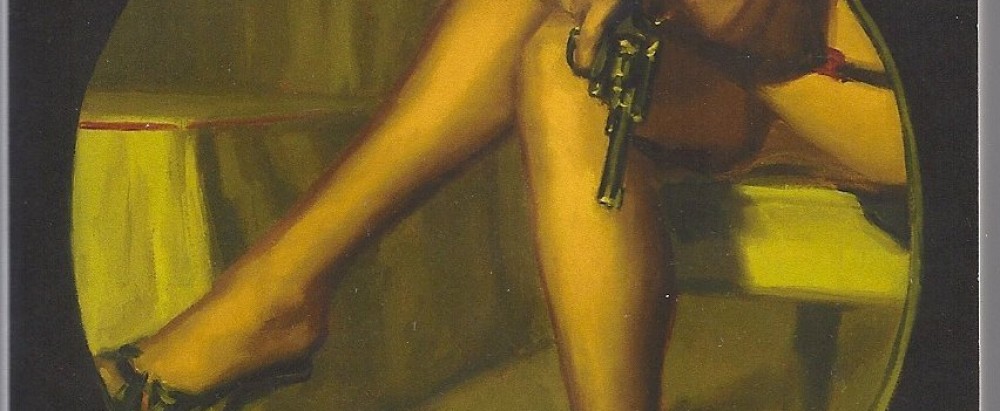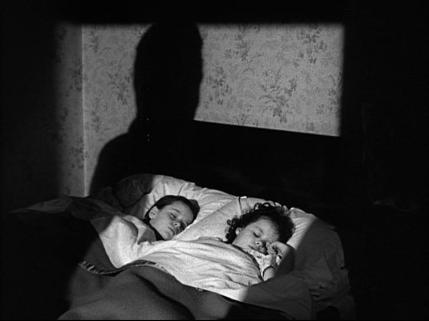 My oh my it’s been a long time! I don’t know what happened with the month – it simply got away from me and resulted in a deplorable absence. But blog, I thought of you daily (more or less), and hoped we’d be together again very soon. AND, it’s really come full circle because it’s another blogathon – SNOOPATHON hosted by the excellent Movies Silently, and another Richard Widmark joint, Fox’s notorious cold war noir Pickup On South Street.
My oh my it’s been a long time! I don’t know what happened with the month – it simply got away from me and resulted in a deplorable absence. But blog, I thought of you daily (more or less), and hoped we’d be together again very soon. AND, it’s really come full circle because it’s another blogathon – SNOOPATHON hosted by the excellent Movies Silently, and another Richard Widmark joint, Fox’s notorious cold war noir Pickup On South Street.
Pickup on South Street doesn’t fuck around. If you’re looking for a noir with a slow build, melodrama, subplots, and intricate character back stories – you’d best look somewhere else. ‘Pickup’ out-Spillanes Mickey Spillane, and director Sam Fuller’s stark journalistic camera work and no-frills script assault the screen for a straight 80 minutes. It’s violent, it’s mean, it’s tawdry, it’s terrific, it’s some serious pulp and apparently the MPAA was asleep at the wheel because the knock-down drag-out between Jean Peters and Richard Kiley is crazy.
 Richard Widmark gives a trade-mark square jawed, shifty-eyed performance as master pickpocket and “three time loser”, the excellently named Skip McCoy. We meet Skip on a train, glancing around furtively and fixing to empty the purse of Candy – fabulous Jean Peters in a fabulous white wiggle dress. Tres Monroe. Sure, having your pocket-picked by a canon (a pickpocket who targets women) is bad enough, but it’s certainly worse when you’re being followed by FBI agents and your purse is chock-full of stolen US government secrets.
Richard Widmark gives a trade-mark square jawed, shifty-eyed performance as master pickpocket and “three time loser”, the excellently named Skip McCoy. We meet Skip on a train, glancing around furtively and fixing to empty the purse of Candy – fabulous Jean Peters in a fabulous white wiggle dress. Tres Monroe. Sure, having your pocket-picked by a canon (a pickpocket who targets women) is bad enough, but it’s certainly worse when you’re being followed by FBI agents and your purse is chock-full of stolen US government secrets.
Yes Ma’am, Skip’s picked the wrong purse. See, our girl Candy was meant to deliver that microfilm on behalf of her commie ex-boyfriend Joey to some shadowy Red higher-ups. Joey and the Communists and the FBI agents have one thing in common – they both desperately want to recover that microfilm.
 Joey sends poor Candy to use her “connections” (read: Candy’s done some unsavory things for dress money) to track down the pickpocket. Meanwhile, on the side of the short arm of the law, police Captain Dan Tiger (Murvyn Vye) (also, seriously, he’s a police captain named DAN TIGER) and FBI Agent Zara (Willis Bouchey) put their heads together and pay local stoolie Moe Williams (Thelma Ritter, who should’ve won the Oscar) for a few likely suspects.
Joey sends poor Candy to use her “connections” (read: Candy’s done some unsavory things for dress money) to track down the pickpocket. Meanwhile, on the side of the short arm of the law, police Captain Dan Tiger (Murvyn Vye) (also, seriously, he’s a police captain named DAN TIGER) and FBI Agent Zara (Willis Bouchey) put their heads together and pay local stoolie Moe Williams (Thelma Ritter, who should’ve won the Oscar) for a few likely suspects.
Candy tracks down Skip and uses more than a few feminine wiles and the promise of money to get the film back, but Skip, sensing the importance after viewing the microfilm, is holding out for a bigger score. Also, at some point Candy develops a crush on Skip – why? Well, it’s certainly not because he’s a gentle soul who treats her with the kindness she’s obviously never known. Probably because he’s familiarly caustic and they obviously want to nail each other. I’d sugar-coat that for you a bit if it were possible, but like I said – Pickup on South Street doesn’t care about your feelings.
 There’s some back and forth, and with Joey feeling the heat from his Communist bosses, he pays Moe a visit to demand the address of the pickpocket. And here’s where Pickup slows down to one of its only emotional plateaus – if you only see one movie featuring the great character actress Thelma Ritter, this should be it. Moe will not surrender the address of Skip, even at gunpoint. It’s less of an act of patriotism than it is simply a person reaching the end of the road. It’s a heartbreaking, singular scene with Moe’s monologue about how she won’t ever have the fancy funeral she’s poured her life savings into. Oh, that? It’s nothing, I just have something in my eye. No, I get terrible hay-fever this time of year. (I CAN’T SEE MY KEYBOARD THROUGH THESE TEARS.)
There’s some back and forth, and with Joey feeling the heat from his Communist bosses, he pays Moe a visit to demand the address of the pickpocket. And here’s where Pickup slows down to one of its only emotional plateaus – if you only see one movie featuring the great character actress Thelma Ritter, this should be it. Moe will not surrender the address of Skip, even at gunpoint. It’s less of an act of patriotism than it is simply a person reaching the end of the road. It’s a heartbreaking, singular scene with Moe’s monologue about how she won’t ever have the fancy funeral she’s poured her life savings into. Oh, that? It’s nothing, I just have something in my eye. No, I get terrible hay-fever this time of year. (I CAN’T SEE MY KEYBOARD THROUGH THESE TEARS.)
Anyway, eventually Candy procures the film, but there’s a frame missing, which drives Joey to beat the living tar out of her. Skip, looking to settle the score, tracks Joey down at a subway, and ultimately, in kind of a film-noir-in-reverse move, does the right thing. Skip and Candy ride off into the uneasy and vaguely discouraging sunset.
 As an ex-journalist, director Sam Fuller developed a very recognizable style which lends itself particularly well to noir, westerns, and war pictures. Pickup On South Street can certainly be broken down in terms of headlines – scene for scene, Fuller wastes no time in establishing who, what, when, where, and how. It’s the kind of pure cinema I’d liken to Hitchcock or Goddard – Joseph MacDonald’s camerawork is fluid and razor sharp as he effortlessly employs extreme close-ups, high angles, and shoots tightly choreographed fight scenes in long shots. Even the much-maligned push-in has its day in Pickup. In keeping with the journalistic style, the film doesn’t lean as much on arty shadows and contrast – instead, there’s a focus on gritty, physical details.
As an ex-journalist, director Sam Fuller developed a very recognizable style which lends itself particularly well to noir, westerns, and war pictures. Pickup On South Street can certainly be broken down in terms of headlines – scene for scene, Fuller wastes no time in establishing who, what, when, where, and how. It’s the kind of pure cinema I’d liken to Hitchcock or Goddard – Joseph MacDonald’s camerawork is fluid and razor sharp as he effortlessly employs extreme close-ups, high angles, and shoots tightly choreographed fight scenes in long shots. Even the much-maligned push-in has its day in Pickup. In keeping with the journalistic style, the film doesn’t lean as much on arty shadows and contrast – instead, there’s a focus on gritty, physical details.
If you can track down a documentary or if you see any special features featuring Fuller – definitely do. He’s quite a character, barking out pearls of filmmaking and storytelling advice with his ever-present cigar. Dude’s an American master (and allegedly very proud that his cigars were a full two inches longer than Fox studio head Daryl Zanuck’s.)
And now, it is a Snoopathon, let’s take a moment for the spy stuff. Shhhh… come close. It’s a secret.
Many critics have read a deeper political agenda into Pickup on South Street, but I would think that any concrete conclusions Pickup draws on patriotism are arbitrary. There is certainly the suggestion that even the most marginal of characters, the stars of Pickup – the thief, the prostitute, and the stool pigeon – are not as bad as communists (nor will they, for the most part, do business with the Reds), but this is somewhat incidental. The characters are out for themselves, and though they do strike back at communism in some small way, it’s largely apolitical. Fuller has said alternately that the film is merely a thriller and made to poke a little fun at the paranoia of the Red Menace, when, as he claims, many Americans knew so little about it. (I am reminded Gary Cooper’s quote that he didn’t know too much about communism, but from what he heard, it’s not on the level. Oh, Gary. When you look that good in pants, it’s okay to say stuff like that.)
In the end, the microfilm is mostly a catalyst for a few monumental events in the lives of a few sad people. Who are the 39 Steps? Doesn’t matter. It is perhaps best summed up by Moe’s line “What do I know about Commies? Nothing. I just know I don’t like them.”
‘Til next time – and I’ll see you real soon; for Chrissakes, don’t keep your stolen government secrets in your purse.

















